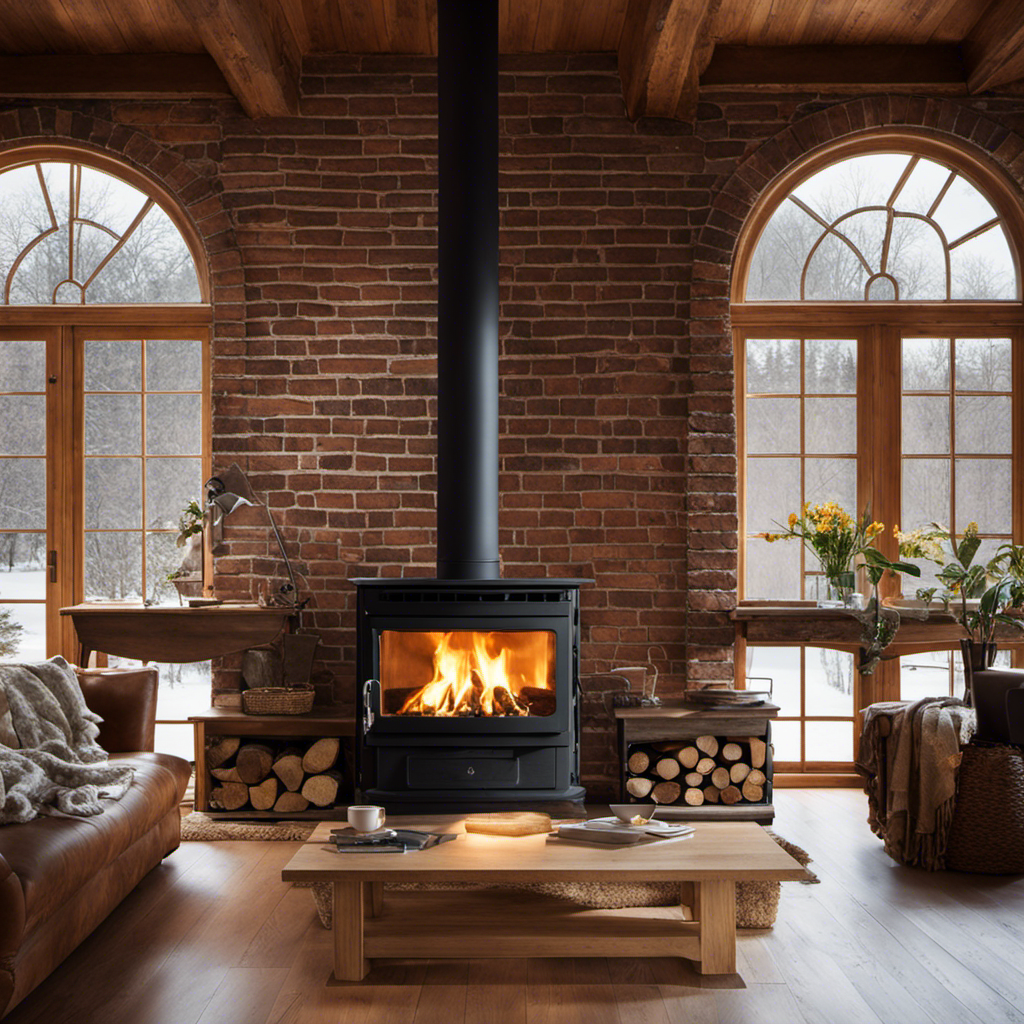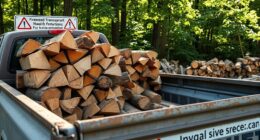
I found a method that enhances the effectiveness and prolongs the burn time of my wood-burning stove.
Imagine being able to throw something other than wood into the fire, something that burns just as efficiently.
In this article, I’ll reveal alternative fuel sources that will not only keep your home warm but also help reduce your carbon footprint.
Get ready to learn about the surprising materials you can burn in your wood stove instead of wood.
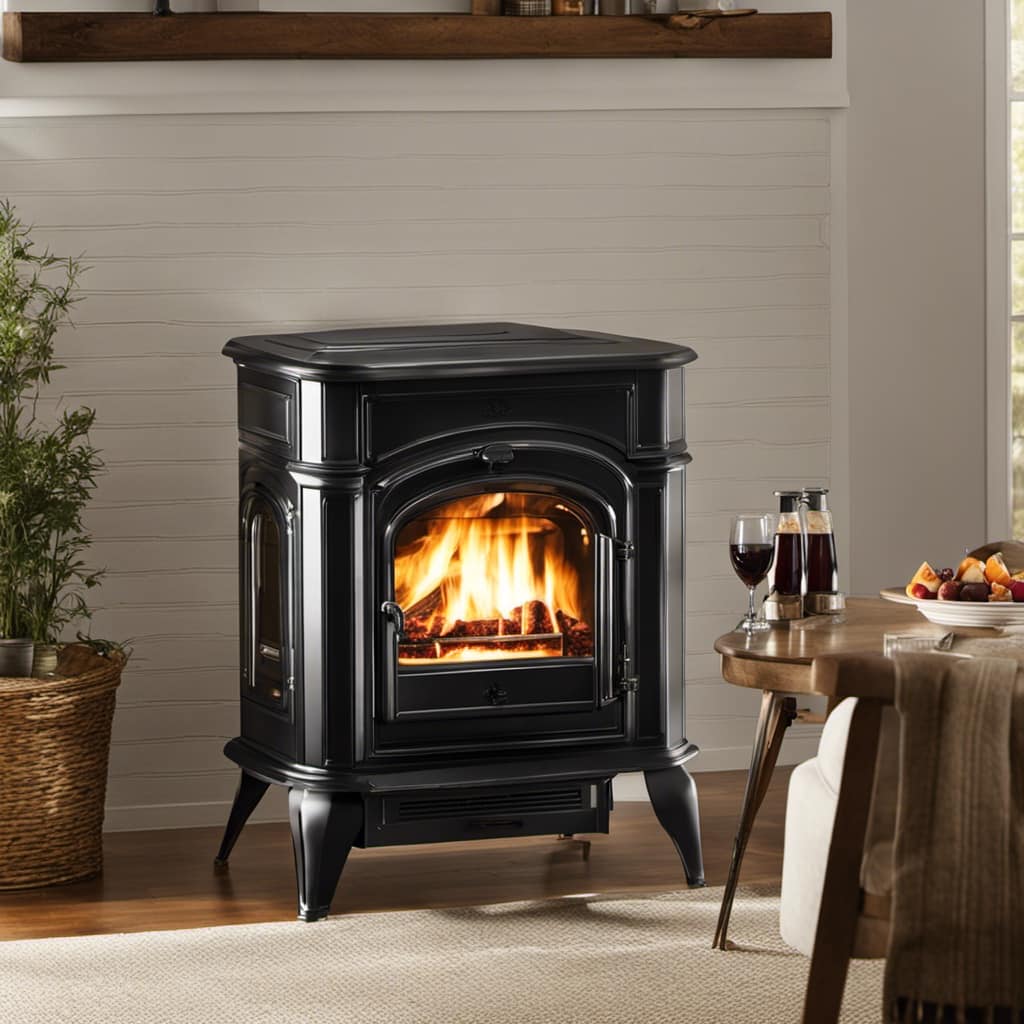
Key Takeaways
- Pellets and briquettes are alternative fuel sources with higher energy density than regular wood logs and firewood, making them more efficient for burning in a wood stove.
- Pellets and briquettes burn more efficiently and produce fewer emissions, resulting in cleaner burning compared to traditional wood logs.
- Renewable options such as corn pellets and coconut shells can be used as sustainable alternatives for heating, reducing reliance on non-renewable sources and repurposing waste products.
- While burning cardboard may be a temporary solution, it is not recommended as it releases harmful pollutants into the air. Cardboard recycling is a more sustainable option that reduces the need for new materials and minimizes environmental impact.
Pellets
I’ve heard that using three pellets instead of one log can be more efficient when burning in a wood stove.
Pellets are small, compressed pieces of wood waste or other biomass materials. They’ve several advantages when used in a wood stove.
Firstly, pellets have a higher energy density compared to regular wood logs. This means that you can generate more heat with a smaller amount of pellets.
Secondly, pellets burn more efficiently and produce fewer emissions. They’ve a consistent size and moisture content, which results in a cleaner and more controlled burn.
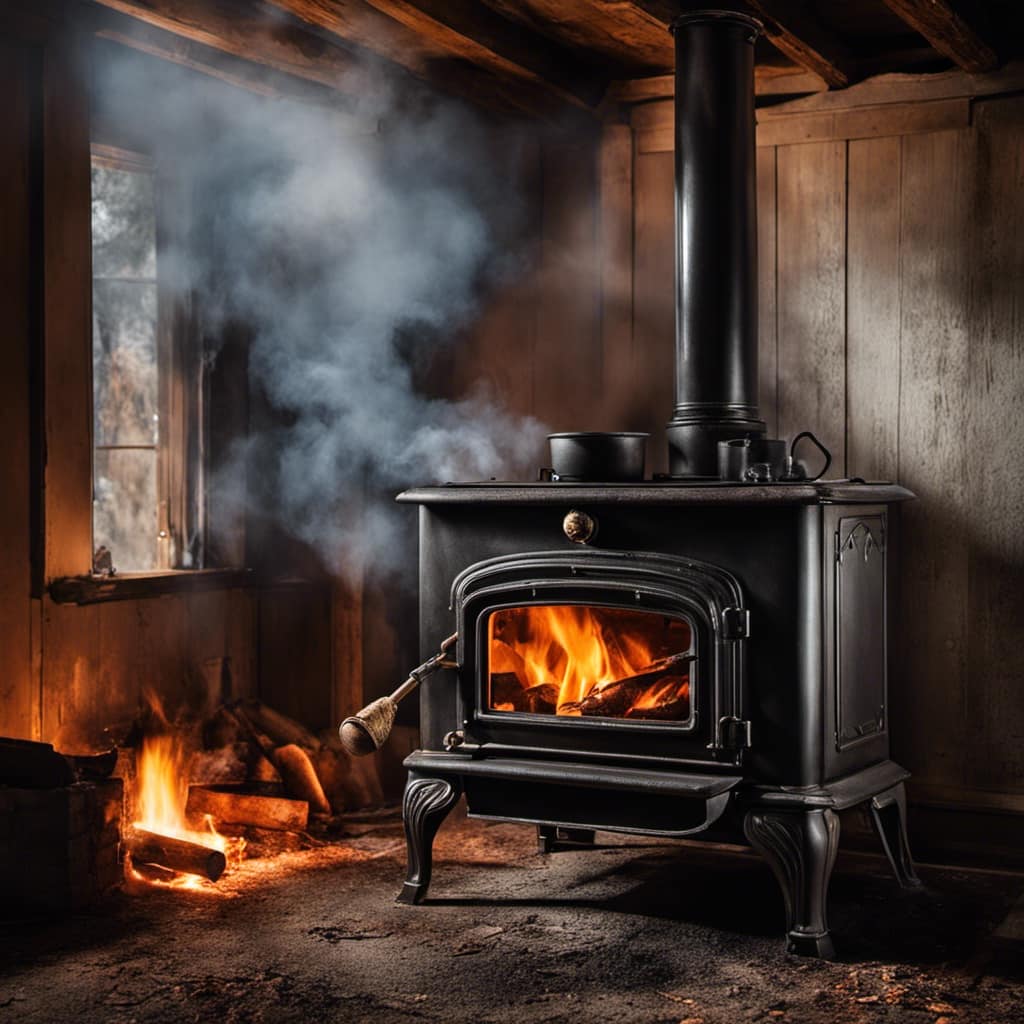
Lastly, pellets are often cheaper and more readily available than traditional firewood. When comparing the cost and efficiency of pellets versus wood, it’s clear that using pellets can be a more cost-effective and environmentally friendly option for heating your home with a wood stove.
Briquettes
Since briquettes are made from compressed sawdust and other waste materials, they’re a convenient and eco-friendly alternative to traditional firewood. Here are four reasons why briquettes are a great choice for alternative fuels:
-
Environmental Impact: Briquettes are made from waste materials that would otherwise end up in landfills or contribute to deforestation. By using briquettes, we can reduce our carbon footprint and help protect our environment.
-
Efficiency: Briquettes have a higher energy density than firewood, which means they burn hotter and longer. This makes them more efficient and cost-effective compared to traditional firewood.

-
Convenience: Briquettes are uniform in size and shape, making them easy to handle and store. They also produce less ash and smoke, resulting in less maintenance and cleaner burning.
-
Versatility: Briquettes can be used in various heating applications, including wood stoves, fireplaces, and outdoor grills. Their consistent quality and reliable performance make them a versatile choice for heating and cooking needs.
Transitioning to the next topic, corn is another alternative fuel that has gained popularity in recent years.
Corn
There are two main ways corn is used as an alternative fuel: ethanol production and corn pellets for heating. Corn is becoming increasingly popular as an eco-friendly alternative to traditional fuels. When burned in a wood stove, corn pellets offer several benefits. Firstly, corn is a renewable resource, making it a sustainable option for heating. Secondly, burning corn pellets produces fewer emissions compared to burning wood, which helps reduce air pollution. Lastly, corn pellets have a high energy content, which means they provide efficient heat output.
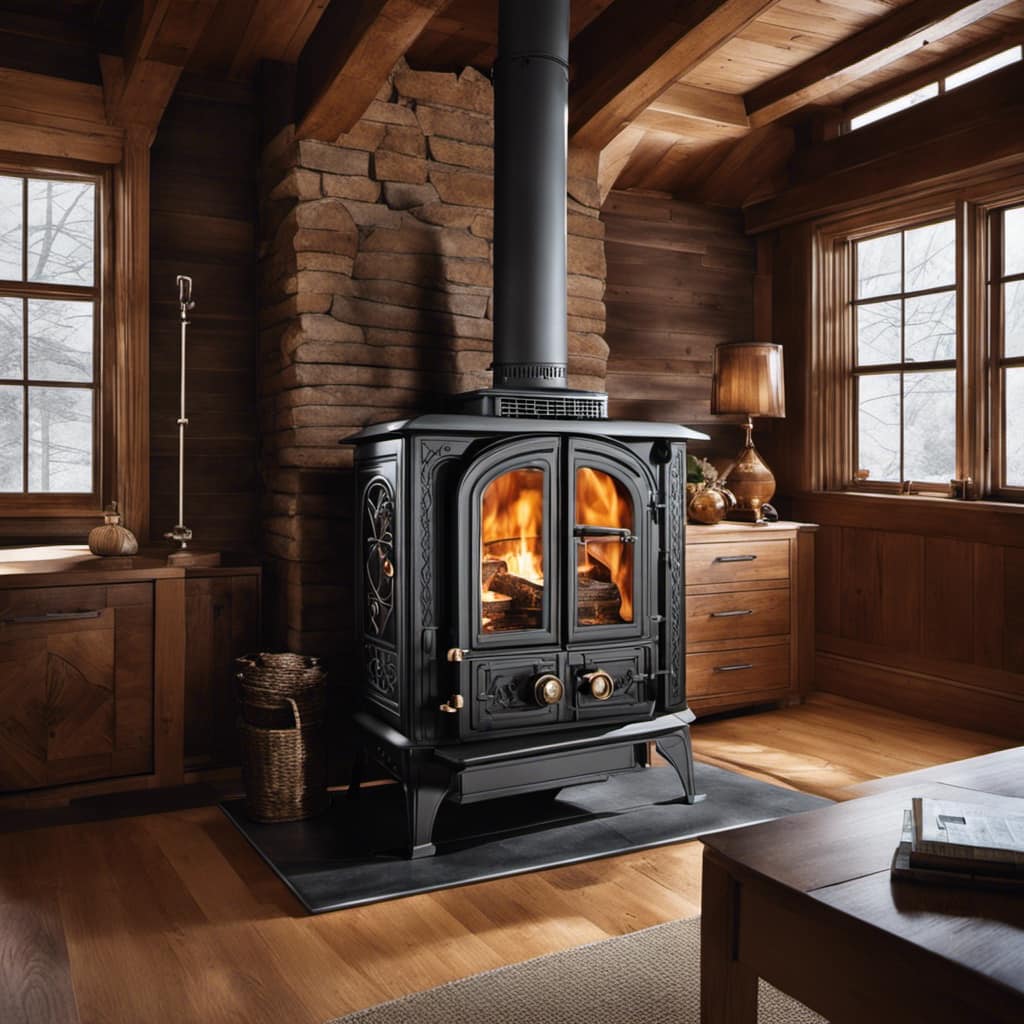
To illustrate the benefits of burning corn in a wood stove, consider the following table:
| Benefits of Burning Corn in a Wood Stove |
|---|
| Renewable resource |
| Reduced emissions |
| Efficient heat output |
Overall, using corn as an alternative fuel in a wood stove is a viable and environmentally friendly option for heating.
Coconut Shells
I can use coconut shells as a fuel in my wood stove, but I need to make sure they’re properly dried and prepared. Here are four reasons why using coconut shells as a sustainable alternative fuel can be beneficial:
-
Environmental Friendliness: Coconut shells are a renewable resource and using them as fuel reduces reliance on non-renewable sources such as fossil fuels.
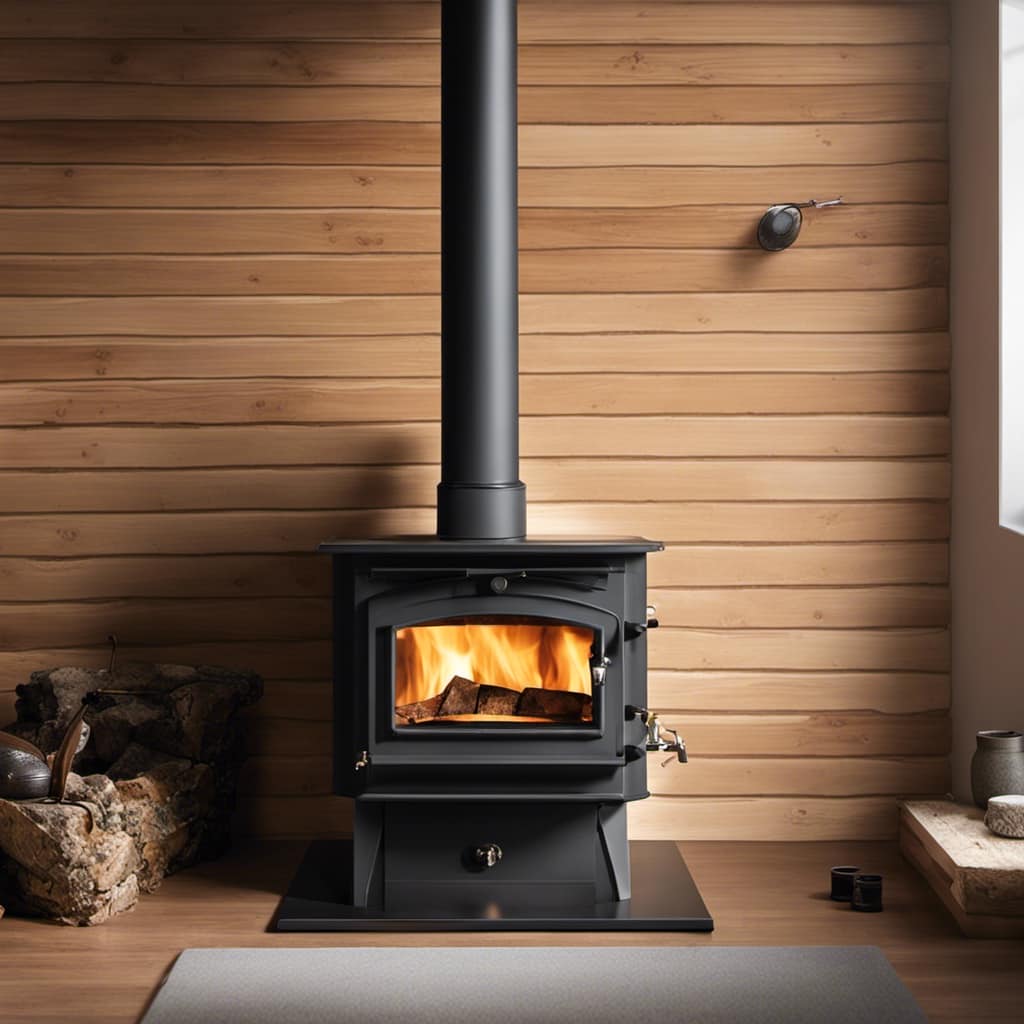
-
High Heat Output: Coconut shells have a high energy content, which means they produce a significant amount of heat when burned.
-
Waste Reduction: By using coconut shells as fuel, we can repurpose a waste product that would otherwise end up in landfills.
-
Cost-effectiveness: Coconut shells can often be obtained for free or at a low cost, making them an affordable option for heating.
To properly prepare and use coconut shells in a wood stove, follow these steps:
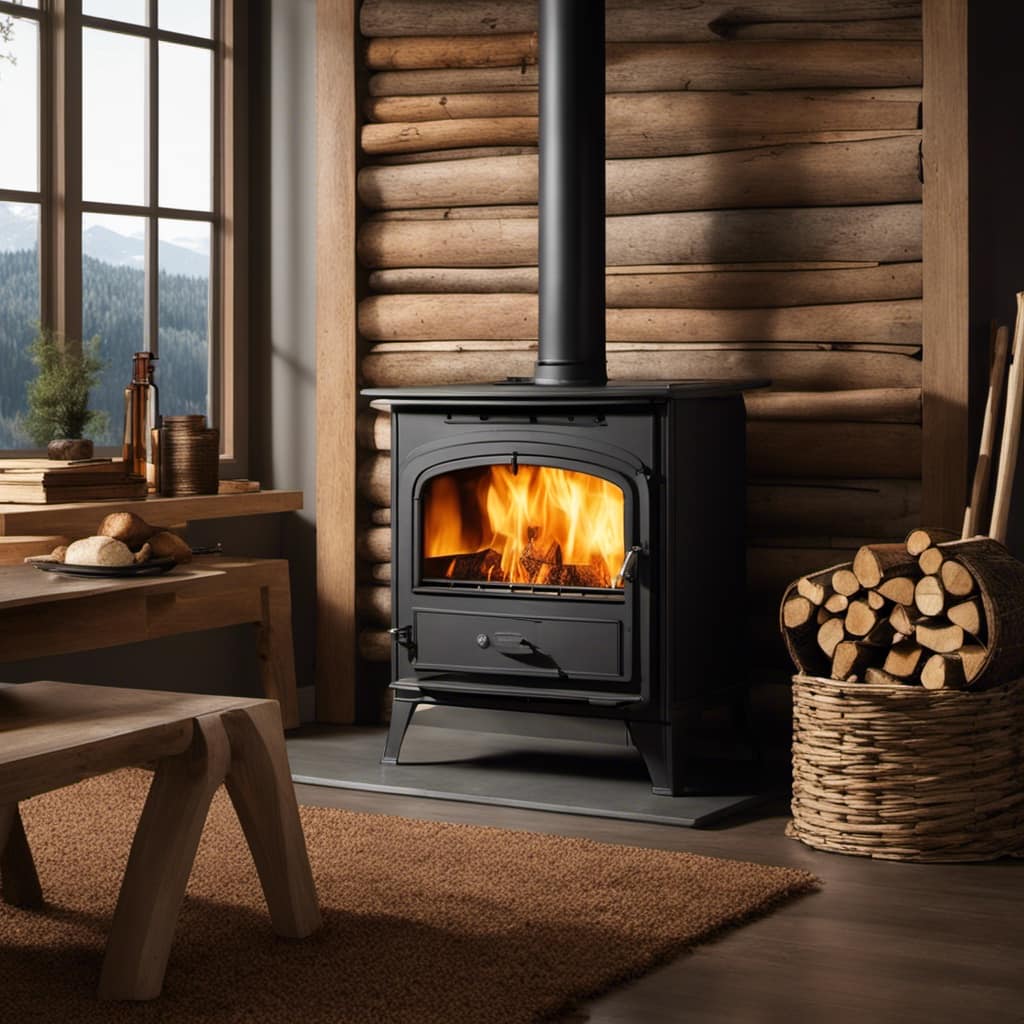
-
Collect and dry the coconut shells thoroughly to remove any moisture.
-
Break the shells into smaller pieces for easier burning.
-
Place the dried coconut shells in the wood stove and light them using kindling.
-
Monitor the fire and adjust the airflow as needed to maintain a steady burn.
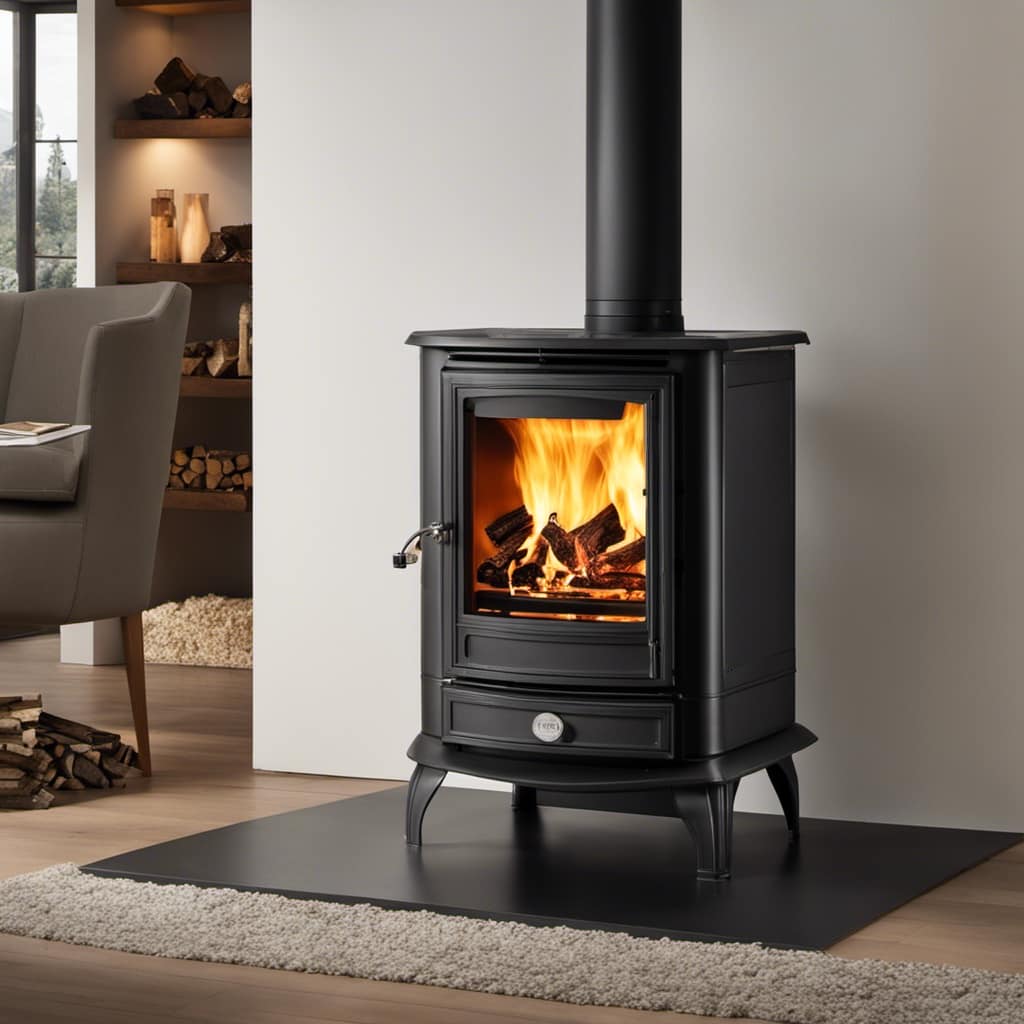
Cardboard
Although cardboard isn’t typically recommended as a fuel for a wood stove, it can be used in emergency situations when no other options are available. Cardboard is a common material that’s widely used for packaging and shipping.
However, it’s important to consider the environmental impact of burning cardboard. When cardboard is burned, it releases carbon dioxide and other harmful pollutants into the air. This can contribute to air pollution and climate change.
It’s also worth noting that cardboard recycling is a more sustainable option, as it reduces the need for new materials and saves energy. Therefore, while burning cardboard in a wood stove may be a temporary solution in emergency situations, it’s best to explore alternative options and prioritize cardboard recycling to minimize its environmental impact.
Frequently Asked Questions
Can I Burn Regular Wood in a Wood Stove Instead of Pellets?
Yes, you can burn regular wood in a wood stove instead of pellets. However, it’s important to consider alternative fuels for wood stoves to reduce the environmental impact of burning wood.
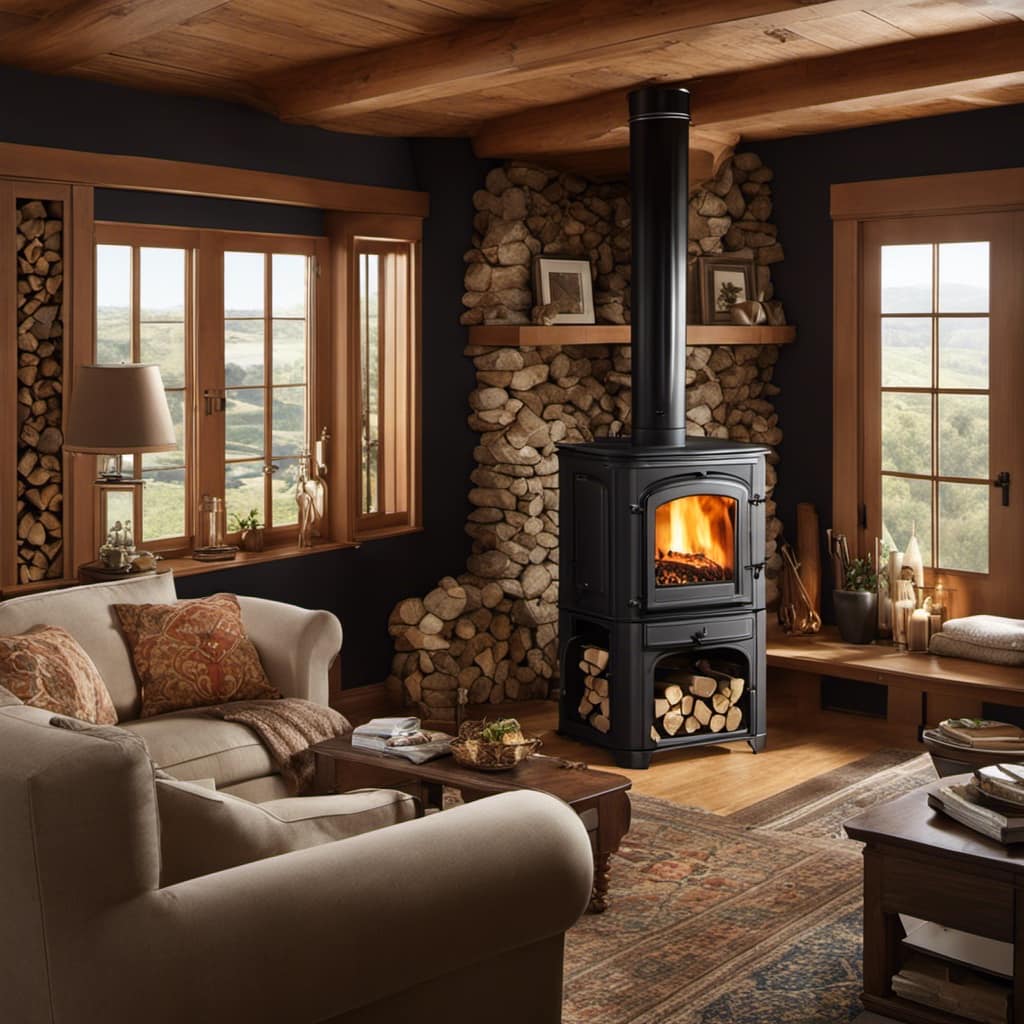
Are Coconut Shells a Sustainable Alternative to Wood in a Wood Stove?
Coconut shells are a sustainable alternative to wood in a wood stove. They burn efficiently, emit less smoke, and reduce waste. By harnessing the power of nature’s coconuts, we can fuel our fires while preserving our forests.
Can Cardboard Be Used as a Primary Fuel Source in a Wood Stove?
Cardboard can be used as an alternative fuel source in a wood stove. It burns efficiently and can provide heat. However, it’s important to use clean, dry cardboard and avoid using any with glossy or inked surfaces.
How Do Corn Pellets Compare to Wood Pellets in Terms of Heat Output?
Comparing corn pellets and wood pellets in terms of heat output, corn pellets have a lower BTU rating but emit less smoke and ash. Pros of using corn pellets in a wood stove include reduced carbon emissions and availability. Cons include higher cost and potential for clogging.
Are Briquettes a More Cost-Effective Option for Heating With a Wood Stove Compared to Traditional Firewood?
Briquettes are a more cost-effective option for heating with a wood stove compared to traditional firewood. Although some may worry about the environmental impact of burning briquettes, they can be made from sustainable materials and emit fewer pollutants than wood.
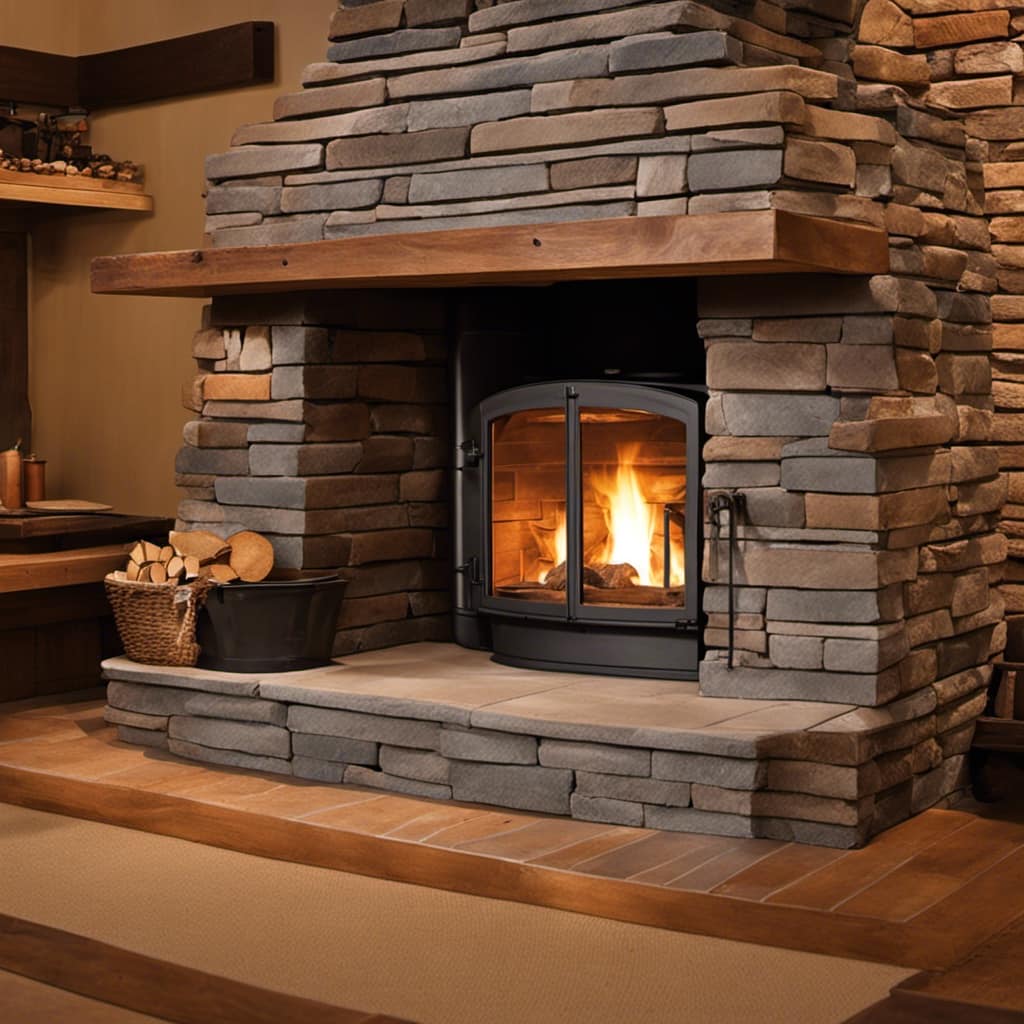
Conclusion
In conclusion, when it comes to alternative options for burning in a wood stove, pellets, briquettes, corn, coconut shells, and even cardboard can be viable choices. These alternatives provide an efficient and sustainable way to heat your home while reducing your reliance on traditional firewood.
So, instead of burning the midnight oil trying to find more firewood, why not explore these alternatives and add some fuel to your fire in a whole new way? After all, variety is the spice of life!
Growing up surrounded by the vast beauty of nature, Sierra was always drawn to the call of the wild. While others sought the comfort of the familiar, she ventured out, embracing the unpredictable and finding stories in the heartbeat of nature.
At the epicenter of every remarkable venture lies a dynamic team—a fusion of diverse talents, visions, and passions. The essence of Best Small Wood Stoves is crafted and refined by such a trio: Sierra, Logan, and Terra. Their collective expertise has transformed the platform into a leading authority on small wood stoves, radiating warmth and knowledge in equal measure.






